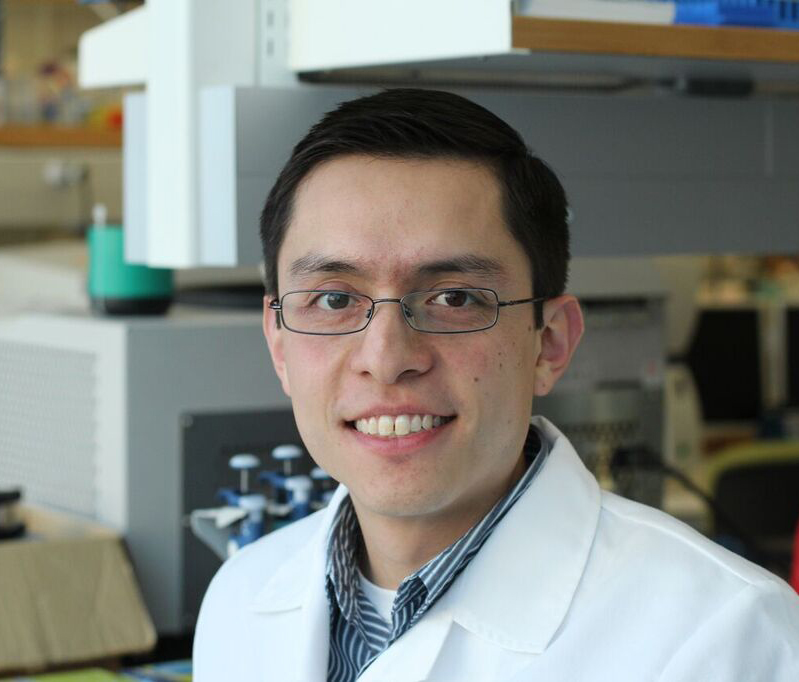
We can learn a lot from fly brains, according to Ismael Fernández-Hernández, a postdoctoral fellow in the USC Stem Cell laboratory of Michael Bonaguidi.
Fernández-Hernández is an accomplished researcher who showed that adult fruit flies have the potential for replenishing brain cells lost to disease, injury or aging. He is also one of 11 new Mexican postdoctoral fellows at USC jointly funded by the university and the Consejo Nacional de Ciencia y Tecnología (CONACYT) — Mexico’s equivalent of the National Science Foundation.
“Over the past five years, USC has deepened our engagement with Mexico, and CONACYT has become a wonderful partner,” said Anthony Bailey, USC vice provost for global initiatives.
As a USC-CONACYT Provost Fellow, Fernández-Hernández will receive funding for up to two years of postdoctoral research at the Eli and Edythe Broad Center for Regenerative Medicine and Stem Cell Research at USC, part of the Keck School of Medicine of USC.
Previously, he received his bachelor’s degree in chemical engineering at ITESO Jesuit University in Guadalajara in Mexico, before working in the food and pharmacological industries.
“I realized that several steps of the industrial chemical processes reproduce those happening in cells,” he said. “That’s why I decided to move from the chemical to more biochemical processes, to eventually drive cells from an ‘uncontrolled’ diseased state to a ‘controlled’ healthy state.”
He began using fruit flies to study cancer during his master’s degree at the Spanish National Cancer Research Centre (CNIO) and the Autonomous University of Madrid in Spain. Then his PhD work at the University of Bern in Switzerland showed, for the first time, that fruit flies have a remarkable regenerative capacity to produce new neurons after brain injury.
He continued to work with fruit flies while studying brain tumors during his first postdoc at the Institute for Research in Biomedicine (IRB) in Barcelona, Spain. He has now brought the buzz to the Bonaguidi Lab at USC.
“Ismael is adding a new dimension, the fly,” said Bonaguidi. “One huge advantage of flies is their high throughput nature. You can screen thousands of drug-like compounds for therapeutic purposes.”
In the Bonaguidi Lab, Fernández-Hernández is using these surging swarms of flies to find genetic factors and test drug-like compounds that may help the brain counteract degeneration from disease, aging or injury.
“Flies are, genetically speaking, quite related to humans,” said Fernández-Hernández. “Sixty percent of the genes causing diseases in humans are shared with flies. Along with several technical advantages, that’s why it is a very suitable model organism to study the genetic causes of diseases.”
Accelerating this research are the world-class facilities at USC’s stem cell research center.
“Here in house, we have several core facilities we can use for this purpose, like the microscopy, flow cytometry and drug screening units. In addition, we have the possibility to sequence and engineer the genome of stem cells,” said Fernández-Hernández.
After his two-year postdoctoral fellowship at USC, Fernández-Hernández and his wife are open to opportunities anywhere in the world. Eventually, however, he hopes to start his own laboratory in Mexico, while maintaining collaborations with his USC colleagues.
“I’d like to try to collaborate there to push science and technology in the country, taking advantage of what I have learned here and there,” he said. “This arrangement between the USC and CONACYT is great, because it allows Mexican researchers to come here to a distinguished university with state-of-the-art facilities to increase their knowledge and experience, which eventually benefits people in both countries. This has been a very important opportunity for me.”
Along with Fernández-Hernández, the Keck School is hosting three other USC-CONACYT Provost Fellows: Katia Gallegos-Carillo in the laboratories of Jonathan Samet and Lourdes Baezconde-Garbanati; Antonia Herrera-Ortiz in the laboratory of Shou-Jiang Gao; and José Bravo in the laboratory of Ralf Langen. Other fellows are performing research at the USC Dornsife College of Letters, Arts and Sciences; the USC Viterbi School of Engineering; the USC Price School of Public Policy; and the USC Davis School of Gerontology.
“We at CONACYT are more than delighted to have formed this partnership with such a prestigious institution as USC,” said Julia Tagüeña, CONACYT deputy director for scientific development. “The results reflect, with no doubt, the quality of the Mexican researchers and the commitment of USC to collaborate with Mexican counterparts in forming human resources that will have a direct impact on solving binational problems. We are more than confident that our collaboration will continue to grow.”
